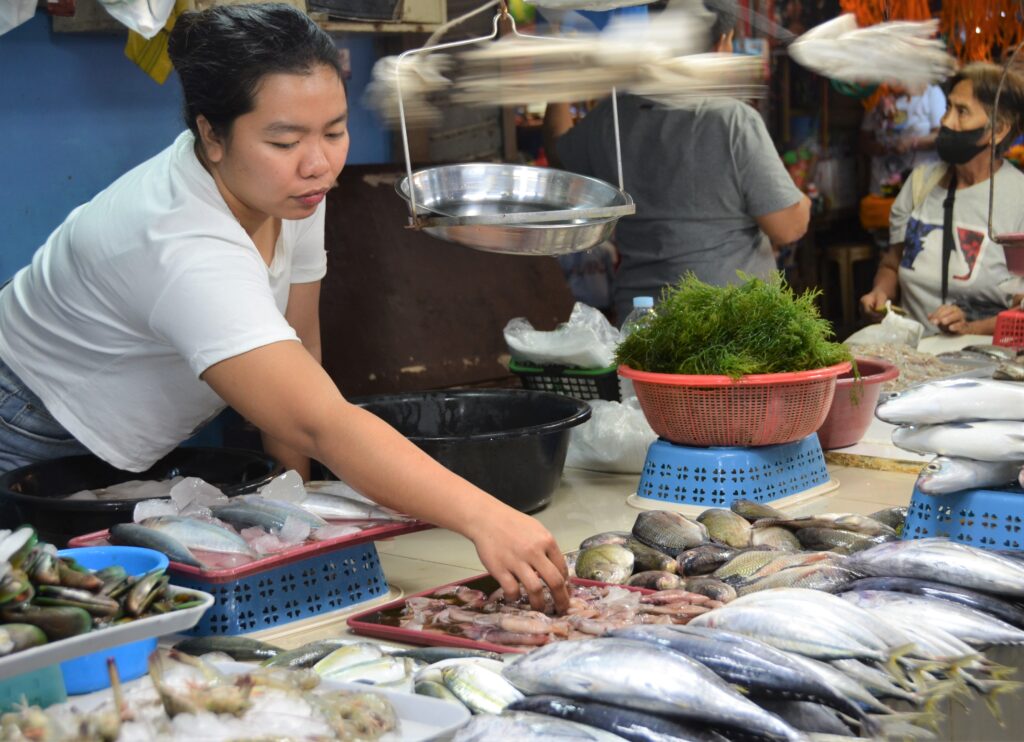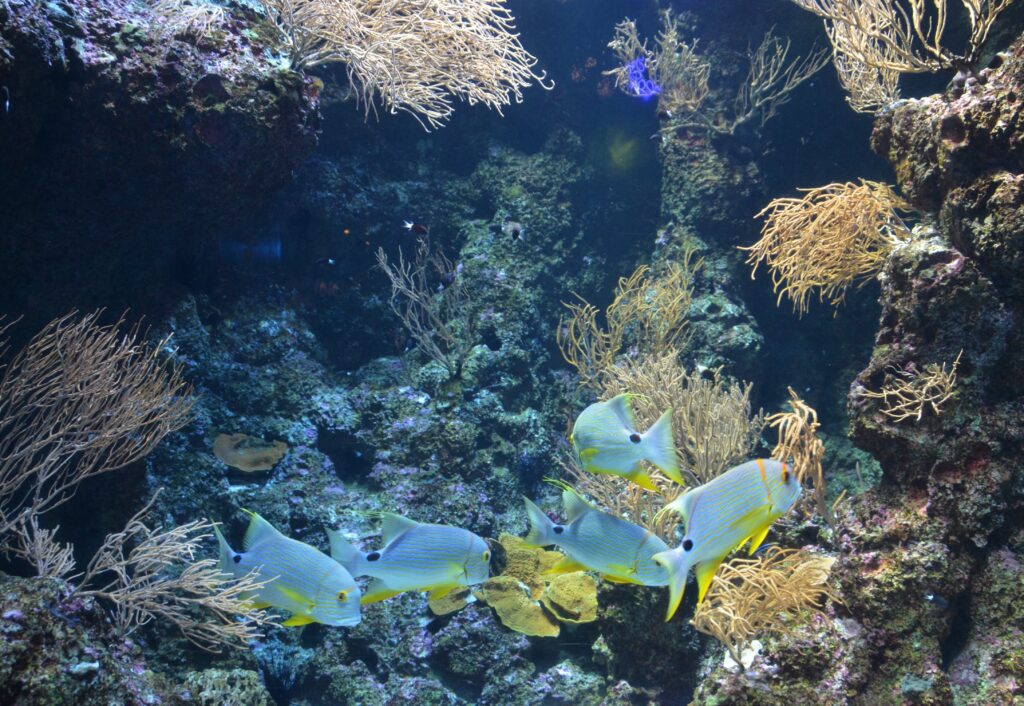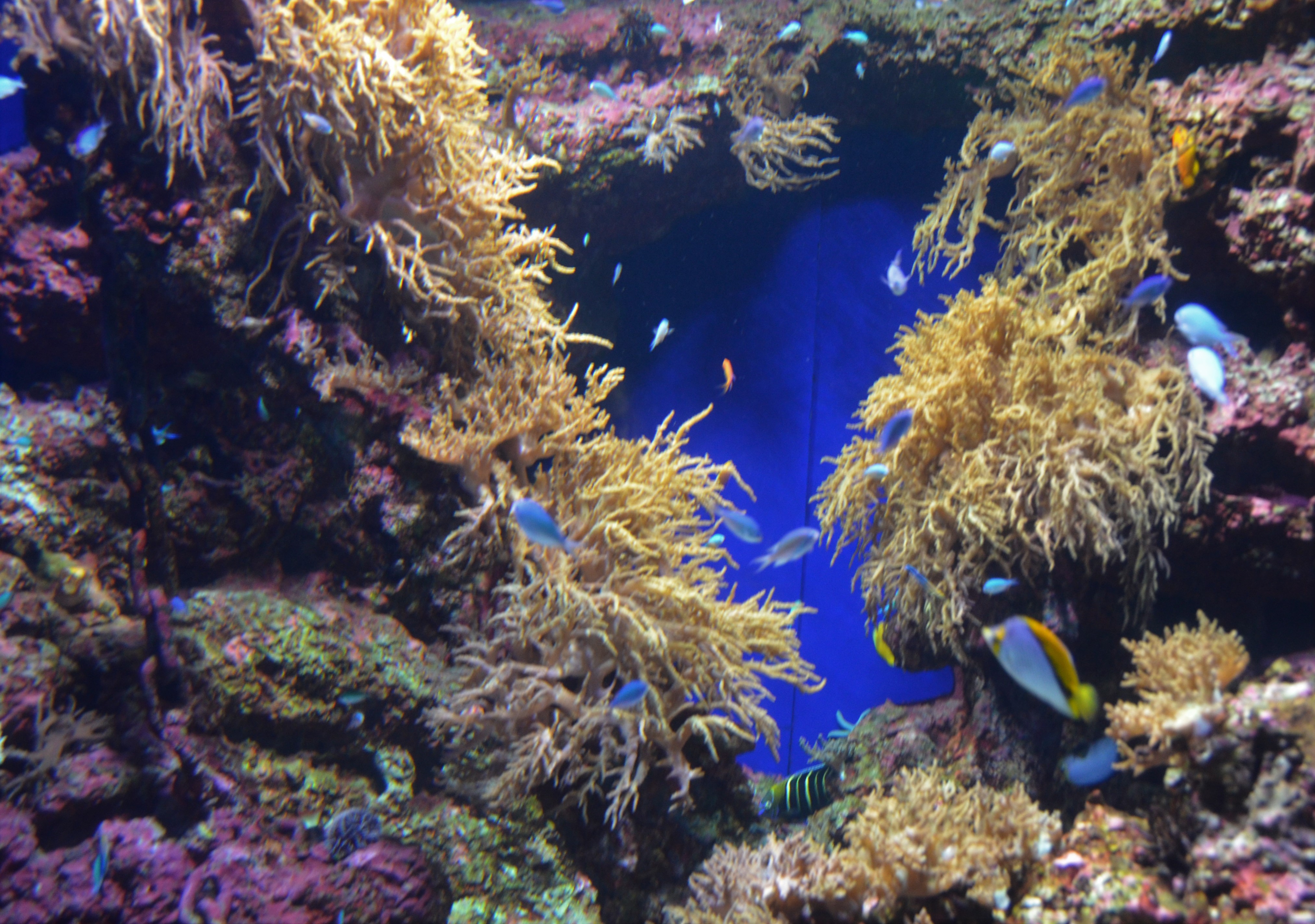Text and Photos by Henrylito D. Tacio
Last February 28, the tanker MT Princess Empress sank. An oil spill off Naujan, Occidental Mindoro.
A bulletin from the University of the Philippines-Diliman College of Science Marine Science Institute (UPD-CS MSI) said three days after the sinking, the oil had already reached the shores of the coastal towns of Naujan, Pola, and Pinamalayan. In just a matter of days, the oil may reach the southern tip of Mindoro “hastened by the effects of prevailing wind.”
The MSI feared several hectares of coral reef may be in danger from the oil spill.
“Among the coastal sites that may be at risk are several marine protected areas, including but not limited to the reefs in Bulalacao, Oriental Mindoro, amounting to some 1,100 hectares of coral reefs,” the bulletin said.
Significant seagrass beds are present in several areas, including the coastal barangays of Pola, Mansalay, Bulalacao in Oriental Mindoro. Caluya Island in Northwestern Antique, which has a high possibility of being affected based on the oil spill trajectory model, also has significant areas of coral reefs (2,900 hectares), mangroves (350 hectares), and seagrass meadows (850 hectares).
Coral reefs can come in contact with oil in three in three major ways, according to the US National Oceanic and Atmospheric Administration (NOAA).
For one, oil floating on the water’s surface can be deposited directly on corals in an intertidal zone when the water level drops at low tide. For another, rough seas can mix lighter oil products into the water column (like shaking up a bottle of salad dressing), where they can drift down to coral reefs.
Lastly, a heavy oil weathers or gets mixed with sand or sediment, it can become dense enough to sink below the ocean surface and smother corals below.
Oil, a complex mixture of many chemicals, can kill corals, depending on species and exposure, the United Nations Environment Program (UNEP) states. “The time of year when a spill happens is critical since coral reproduction and early life stages are particularly sensitive to oil,” the UN agency adds.
Once soil comes into contact with corals, it can kill them or impede their reproduction, growth, behavior, and development. “The entire reef ecosystem can suffer from an oil spill, affecting the many species of fish, crabs, and other marine invertebrates that live in and around coral reefs,” NOAA explains.
Oil spills are not the only incidents that threaten the country’s coral reefs. Most of these threats are caused by human activities. As marine scientist Don McAllister, who once studied the cost of coral reef destruction in the country, deplores: “Nowhere else in the world are coral reefs abused as much as the reefs in the Philippines.”
Sedimentation – the process of soils settling to the bottom of the sea – is said to be the most important single cause of reef degradation. Sediments that wash over reefs have a number of negative effects on corals, marine scientists claim.
“The initial plume blocks out sunlight, reducing photosynthesis and therefore the quantity of energy available to the coral polyps,” explains Peter Weber, of the Washington-based Worldwatch Institute. “If the sediment settles on the reef, the polyps have to work together in waves to attempt to uncover themselves, and they produce extra quantities of mucus to try to wash off the particles. As a result, corals are weakened.”
Deforestation is the most common source of sediments. “When trees are cut down and the underbrush burned, the mountainsides become bare and the soil are defenseless against strong wind and rain,” says the Coral Research Project of the Bureau of Fisheries and Aquatic Resources (BFAR). “During rains, runoff carries eroded soil down to the rivers that deposit it in the sea.”
Coastal development, which helps drive this deforestation, is itself a major cause of reef decline. This includes activities such as filling to provide sites for industry, housing, recreation, airports and farmlands; extraction of lagoon sand for use in construction; and dredging to create, deepen or improve harbors and create ports and marinas. Such activities increase turbidity, alter water circulation and even cause the destruction of entire reef systems.
Destructive fishing methods, particularly dynamite fishing and cyanide fishing – also contribute to the rapid disappearance of the country’s coral reefs. The kayakas and the muro-ami have also created the same havoc.
Aside from these human activities, natural causes of destruction among coral reefs also occur. These include extremely low tide, high temperature of surface water, predation, and the mechanical action of currents and waves. Extremely low tides usually expose corals to sunlight and to freshwater runoff, both of which are said to be lethal over several hours of exposure.
Climate change is increasing the ocean’s temperature. The result: coral bleaching. Explains John Ryan of the Washington-based Worldwatch Institute: “When subjected to extreme stress, they jettison the colorful algae they live in symbiosis with, exposing the white skeleton of dead coral beneath a single layer of clear living tissue. If the stress persists, the coral dies.”
Coral reefs are the marine equivalent of rainforests and considered one of the planet’s essential life-support systems. These “biological wonders,” as American environmental author Don Hinrichsen called them, are among the largest and oldest living communities of plants and animals on earth, having evolved between 200 and 450 million years ago.
Coral reefs are constructed by millions of flower-like animals with tube-like bodies and finger-like tentacles called polyps. The form of polyp, which is about the size of a fingernail (one centimeter to three centimeters), depends on the shape and form of the coral. A coral may be a single large polyp. Near the sea’s surface where waves have a strong effect, corals are massive. As they occur in deeper water, they become branched or take on flowery forms.
Hinrichsen claimed it takes centuries to create a reef. The coral’s skeletons amass to form the foundation of a reef. The stony structures grow slowly, normally at a rate of 0.25 centimeters to 0.5 centimeters a year.
The stony corals are actually the bedrock of the reef. “Stony coral colonies are composed of hundreds of thousands of individual living polyps,” the US Environment Protection Agency (EPA) says. “Polyps are capable of drawing dissolved calcium from seawater, and solidifying it into a hard mineral (calcium carbonate) structure that serves as their skeletal support.”
The country’s coral reef area is estimated at 26,000 square kilometers, which is the second largest in Southeast Asia. Approximately 500 species of scleractinian or “stony” corals are known to exist in the area, 12 species of which are considered endemic.
There are three major types of coral reefs, according to the late marine scientist Angel C. Alcala. These are the fringing type (those found on the edges of islands and which constitutes 30 percent of the country’s coral reefs); the barrier type (best exemplified by the Dajanon Reef of Central Visayas); and the atoll (of which the Tubbataha and Cagayan Reefs in the Sulu Sea are ideal examples).
The Philippines holds one of the most extensive coral reefs in the world with a sprawling area of 27,000 square kilometers strategically located in Palawan (37.8%), Sulu (27.8%), Visayas (21.7%), Northern Luzon (7.6%), Central and Southern Mindanao (3.2%), and the Turtle Islands (1.7%).



Coral reefs provide habitat for a large variety of marine life, including various sponges, oysters, clams, crabs, sea stars, sea urchins, and many species of fish. They are also linked ecologically to nearby seagrass, mangrove, and mudflat communities. Coral reefs are so valued because they serve as a center of activity for marine life.
Studies show that some corals can live for up to 5,000 years, making them the longest living animals on Earth. Around one billion people globally depend on coral reefs for their food and livelihood, according to the United Nations. As fishing grounds, coral reefs are thought to be 10 to 100 times as productive per unit area as the open sea.
Let that sink in for a second. The disappearance of coral reefs would be catastrophic; resulting in hundreds of millions of people around the world losing their main source of food and income.
Some 98% of the country’s coral reefs are classified as threatened, with 70% at high or very high risk, reports climatehotmap.org. The disappearance of coral reefs is one of the reasons why fish production from the open seas is plunging.
Some consumers are already feeling the impact. Jeannyline T. Arriaga, from Bansalan, Davao del Sur, is a doting mother. She usually wakes up early in the morning to prepare breakfast for her two children, who are going to school. Generally, she cooks rice and fish.
Lately, however, she observes that the fish she usually buys at the public market has become scarcer. In fact, there are days when she could not find any that she buys another kind of fish. Her two children complain because they don’t like the new kind of fish she serves to them.
Jeannyline also notices that if the fish she likes is available, they are becoming smaller. “They are not only getting scarcer but they are becoming expensive, too,” she points out.
She may not be aware of it but it is not the only fish she likes that is becoming rarer and pricey but the same is true with other varieties of fish.
A survey by the Social Weather Stations commissioned by Oceana in 2017 found that 82% of Filipinos believe fish sold in the markets are more expensive now compared to 10 years ago. Meanwhile, 54% of respondents said the size of fish has become smaller and 55% said they found fewer varieties of fish in local markets compared to a decade ago.
In 2020, the Philippine Statistics Authority reported the country had a total fish production of 2,596,565.83 metric tons with 37.5% coming from commercial marine fishing, 31% from municipal marine fishing, 27.8% from aquaculture, and 3.6% from municipal inland fishing,
“With the decline in the production of ‘galunggong’ (round scad) from our seas, importation of marine fish from Vietnam, Taiwan and China during the months and ‘closed season’ to augment local supply was done by the Department of Agriculture,” said Dr. Rafael D. Guerrero, an academician with the National Academy of Science and Technology.

